Day 1 :
Keynote Forum
David H Van Thiel
Rush University Medical Center, USA
Keynote: Hepatitis C eradication: A promise unfulfilled
Time : 09:30-10:10
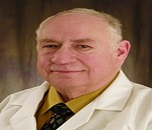
Biography:
David Van Thiel obtained his MD from the University of California at Los Angeles and completed his Internal Medicine residencies at Cornell University Hospitals and Boston University. He completed a Gastrointestinal/Hepatology fellowship at Boston University and the University of Pittsburgh. At the latter institution, he progressed from an Instructor of Medicine to Professor of Medicine and Director of the Gastroenterology & Hepatology Program and served as the medical Director of Liver transplantation. He has published more than 100 peer reviewed papers in a variety of journals and is on the Editorial Board of several journals as well as serves as a reviewer
Abstract:
Hepatitis non-A and non-B hepatitis was recognized as a unique form of viral hepatitis distinct from hepatitis A, hepatitis B, and other unusual types of a chronic hepatitis such as CMV, EBV as well other more uncommon types of viral hepatitis in the late 1970s. His clinical characteristics, biochemical manifestations as well as its chronicity from its initial presentation followed by increasing stages of chronic hepatitis and hepatic fibrosis ultimately resulting in cirrhosis and occasionally progressing to hepatic cancer and required an additional 15-30 years. A host of potentially antiviral agents were utilized initially to treat the disease process with minimal or no success. With the introduction of interferons (alfa 2a or alfa 2b) with or without additional ribavirin, a modicum of success defined as a reduction in transaminase levels was achieved with little or no retrospectively determined viral clearance. With the isolation and characterization of the hepatitis C virus genome and the various polypeptides it codes for, a new era of treatment directed at inhibiting viral replication as opposed to enhancing the immune response against the virus began. The initial direct acting antiviral agents increased viral clearance rates to 40%. Agents more recently developed have increased the rates of viral clearance to 95 to 100%. This initiated reports (a promise) that hepatitis C would be eliminated as a disease process by 2020 with a progressive decline in the rates of cirrhosis and hepatocellular carcinoma thereafter through at least 2030. Unfortunately this does not appear to be the case as multiple obstacles prevent the favourable outcome. The issues and remaining and prohibit the promises full film and include the following: Lack of knowledge of primary care physician's that the disease is a serious hepatic disease that slowly and quietly progresses to cirrhosis and potentially hepatic cancer and is treatable. As a result large numbers estimated to be three quarters of the infected population failed to be identified. Secondly the cost of the drugs is prohibitive to those individuals with no insurance and contributes to the effort by third party pears and cover mental agencies to limit treatment to selected groups with advanced liver disease. As a result only a minor fraction of the infected population is identified for treatment and receives treatment. In addition, individuals with non-hepatic manifestations of hepatitis C are not recognized this having the disease process and are excluded from treatment despite the fact that this population represents the largest group of individuals perpetuating the disease in the community as they do not know they have the disease. In order with a promise of the elimination of hepatitis C and a reduction in long-term consequences of the infection universal defecation of infected patient's to include all forms of hepatic dysfunction as well as non-hepatic manifestations of the disease need to be recognized in treated. To accomplish this, the cost of treatment will have to be dramatically reduced and includes not only the cost of the therapeutic agent but also through numerous tests required to justify
treatment. Some progress is being made by governmental agencies that are looking at the concept of micro-elimination as a potential means of reducing the prevalence of the disease in high prevalence groups such as men having sex with men, individuals enrolled in drug treatment programs, who said receive multiple transfusions as result of clotting disorders and/or hemolytic anemias. This is clearly a started but only if start.
Keynote Forum
Giovanni Gasbarrini
Catholic University of Rome, Italy
Keynote: Gut Microbiota: An epochal revolution
Time : 10:10-10:50

Biography:
Giovanni Gasbarrini was President of the Italian Society of Alcology and Member of the Board of Directors of the Italian Society of Gastroenterology, of the Italian Society of Internal Medicine, from which he was awarded the title of Member of Honor. He is the founder and President of the “Club del Tenue” and of the “FONCRE” (Operative Cancer Rectus-Colon), and currently the corporate framework for digestive diseases (Club del Tenue, FONCRE, Hp Italian Section, Intestinal Motility). He was Vice-President of the International Association of Surgeons & Gastroenterologists. He was President and is now a Member of the European Helicobacter Study Group (of which the Italian section is also the President); he was President of EAGEN (European Associate Gastroenterol, Nutrition) and is currently past-President of EAGEN. He is a member of over 15 Italian and International Scientific Societies (Italian Society of Internal Medicine -Italian Geriatrics Society -Italian Gastroenterology Society - Italian Electronic Microscopy Society -Italian Society of Alcology - European Society Liver Study - French Society of Gastroenterology.
Abstract:
Few data exist on differences in gut microbiota composition among principal gastrointestinal diseases. We evaluated the differences in gut microbiota composition among uncomplicated diverticular disease (DD), IBS and IBD patients. DD, IBS and IBD patients along with healthy controls (CT) were enrolled in our Italian GI outpatient clinic. Stool samples were collected. Microbiota composition was evaluated through a metagenomic gene-targeted approach. GI pathology represented a continuous spectrum of diseases where IBD displayed one extreme while healthy controls displayed the other. Among Phyla, Biplot PC2/PC3 and dendogram plot showed major differences in samples from IBS and IBD. DD resembled species CT composition, but not for Bacteroides fragilis. In IBS, Dialister spp and then Faecalibacterium prausnitzii were the most representative species. UC showed a reduced concentration of Clostridium difficile and an increase of Bacteroides fragilis. In CD, Parabacteroides distasonis was the most represented, while Faecalibacterium prausnitzii and Bacteroides fragilis were significantly reduced. Each disorder has its definite overall microbial signature, which produces a clear differentiation from the others. On the other side, shared alterations constitute the “core dysbiosis” of GI diseases. The assessment of these microbial markers represents a parameter that may complete the diagnostic assessment.
Keynote Forum
Fong-Fong Chu
The First Affiliated Hospital - HUST, P R China
Keynote: Reactive oxygen species generated by NADPH oxidase-1 and Dual oxidase-2 contribute to inflammatory bowel disease
Time : 11:10- 11:50

Biography:
Fong Fong Chu has her expertise in gastrointestinal diseases especially in inflammatory bowel disease (IBD). Her team has established a mouse model of IBD which is very-early onset. These mice are deficient in two isoenzymes which reduce hydrogen peroxide named GPx1/2-double knockout (DKO). This model is a better model than chemical-induced colitis models because it is not injury based and mimic closely to human IBD. She has built this model through 20 years of research and has identified new targets for IBD therapy. She joined Beckman Research Institute of the City of Hope, Duarte CA USA (1987). She is currently associated with the Department of Gastroenterology & Hepatology and the First Affiliated Hospital and College of Clinical Medicine of Henan University of Science and Technology, Luoyang, Henan, P R China since 2016.
Abstract:
Statement of the Problem: Gut microbes play an essential role in pathogenesis of inflammatory bowel disease (IBD). Host cells respond to microbe colonization by releasing cytokines and chemokines. Some inflammatory cytokines such as IL-4 and IL-13 induce NADPH oxidase-1 (NOX1) and dual oxidase-2 (DUOX2) gene expression in the epithelial cells. Elevated NOX1 or DUOX2 can produce reactive oxygen species (ROS) to regulate various cellular functions including cell proliferation, migration and apoptosis. NOX1 and DUOX2 have been linked to very-early-onset IBD, beginning before 6 years old. But the exact role of NOX1 and DUOX2 in IBD is not known.
Methodology: Mice deficient in antioxidant enzymes, glutathione peroxidase (GPx)-1 and -2, so called GPx1/2-DKO mice, develop ileocolitis around weaning. The hall-mark of pathology includes high crypt apoptosis, Paneth cell depletion, exfoliation and crypt abscess. Germ-free DKO mice are disease-free. To explore the role of Nox1 and Duox2 in gut inflammation, we studied the pathology and phenotype of Nox1-GPx1/2-triple KO (TKO) and Duox GPx1/2-TKO mice at 35 days of age (comparable to human very-earlyonset IBD).
Findings: Nox1-Gpx1/2-TKO mice virtually do not have pathology. Duox-GPx1/2-TKO mice have intermediate pathology except crypt apoptosis remain as high as the DKO mice.
Conclusions & Significance: Both Nox1 and Duox2 contribute to inflammation, while Nox1 has a stronger impact than Duox2 probably because it is expressed in the crypt of the gland. Drugs that have been effective in treating IBD, such as dexamethasone and antibiotics, are likely mediated through suppression of NOX1 and DUOX2 gene expression.
- Gastrointestinal Disorders | Microbiota and diseases | Pancreatic diseases | Liver diseases | Helicobacter Pylori Treatment
Location: Holiday Inn Rome Aurelia

Chair
Fong-Fong Chu
The First Affiliated Hospital - HUST, China
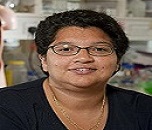
Co-Chair
Silvia Melgar
APC Microbiome Ireland - University College of Cork, Ireland
Session Introduction
Qingjie Li
The University of Texas, USA
Title: Childhood colitis aggravates gut barrier impairment via miR-196 when exposed to another episode of inflammation in adult-life

Biography:
Qingjie Li, a Molecular Biologist, earned his MS Degree in Chemistry from the Department of Chemistry, Guangxi Normal University in 1991 and a PhD Degree in Biochemistry and Molecular Biology from the Central South University ( P R China) in 2000. He worked as a Faculty Member at the same university from 1991 to 2000 and as a Postdoctoral Fellow at the Linus Pauling Institute, Oregon State University from 2000 to 2006. In 2007, as an Assistant Professor he joined the University of Texas Medical Branch at Galveston. He was promoted to Associate Professor in 2018. He has several awards to his credit and has published more than 40 peer-reviewed research articles, a book chapter, and several gene sequences in GenBank. He has served as a Reviewer for NIH, American Gastroenterological Association, and numerous journals, including Gastroenterology, the most prominent journal in the field of gastrointestinal disease. His research interest include: pathogenesis, molecular mechanisms, and chemoprevention of inflammatory bowel diseases (IBD) and its comorbidities, including colitis-associated cancer and IBD-associated cardiovascular disorders.
Abstract:
Background & Aims: Mounting evidence suggests that adverse early-life events influence the perinatal programming and maturation of the immune system, predisposing the host to complex diseases including inflammatory bowel diseases (IBD). We hypothesized that neonatal colonic inflammation generates long range epigenetic memory that aggravates epithelial barrier impairment when exposed to another episode of inflammation in adult-life.
Methods: Neonatal inflammation (NI) was induced by intra rectal administration of trinitrobenzene sulfonic acid (TNBS, 130 mg/kg) on postnatal day 10. Another dose of TNBS (80 mg/kg) was applied to induce adult inflammation (AI) six weeks after NI. All 4 groups of rats (Veh+Veh, NI+Veh, Veh+AI, and NI+AI) were euthanized 7 days later.
Results: In NI+AI rats, we observed an aggravated epithelial damage, evidenced by exacerbated increase in colonic permeability, when compared with the other three groups of rats (p<0.01). We also tested the double-hit injury strategy in adult 6-week old rats given 130 mg/kg TNBS. After 6 weeks of remission, another episode of adult inflammation was induced with TNBS (AI+AI rats). There was no heightened tissue injury in AI+AI vs Veh+Veh, AI+Veh, and Veh+AI rats; noticeably less permeability was detected when compared to the NI model. Thus, aberrant epithelial damage occurs preferentially after colonic injury in the neonates. Molecular studies revealed a marginal decrease in Cdh1 mRNA and a significant reduction in E-cadherin protein in the colon mucosa of NI+AI rats, while Occludin, ZO-1, Claudin 1, Claudin 5, and Claudin 7 remained unchanged. To investigate the epigenetic mechanism underlying the loss of E-cadherin, we carried out miRNA arrays. miR-139, 196, 547, and 3596 were significantly upregulated whereas Let-7e, miR-19a, 96 and 101a were markedly repressed in NI+AI vs the other three groups of rats. Importantly, miR-196 is significantly elevated in patients with Crohn’s disease or colon cancer, indicating a human clinical correlation. Bioinformatics analysis predicted E-cadherin, a key adhesion molecule involved in gut epithelial integrity, as a target of miR-196. To determine its role in regulating E-cadherin, we overexpressed miR-196 in HT29 colorectal cancer cells and found a significant decrease in E-cadherin mRNA and protein (p<0.01). Thus, we postulated that a miR-196 inhibitor might decrease NI-induced disease susceptibility and might ameliorate epithelial barrier injury in NI+AI rats. Intervention study with miR-196 inhibitor is currently ongoing.
Conclusions: Severe neonatal colonic inflammation renders the host susceptible to aggravated epithelial damage in part by upregulating miR-196, which in turn downregulates E-cadherin, resulting in exacerbated increase in colonic permeability. miR-196 could serve as a therapeutic target in IBD and colitis-associated colon cancer.
Susan Joyce
APC Microbiome Ireland - University College of Cork, Ireland
Title: Gut bacteria and Metabolism: Examining host-microbe cross talk in the disease state

Biography:
Susan Joyce graduated with a B.Sc from NUI Maynooth in Biology and Mathematics and a research PhD in host-miocrobe interactions. She was awarded a Marie Curie Fellowship to examine cis and trans acting factors affecting mRNA synthesis and microbial gene expression at the Ecole Normal Superieure, Paris which included a stint at the Max Planck Institute, Berlin. Before returning to University College Cork, She was a postdoctoral scientist at Trinity College Dublin and the Univerity of Bath, UK. Her main interest is in microbial genetic and biochemical systems that alter eukaryotic host signalling. Susan is currently a Lecturer in the School of Biochemistry and Cell Biology and a funded Investigator in the APC Microbiome Institute as part of the Spoke 4 Host- Microbe Dialogue.
Abstract:
Our co-evolved gut microbiota confers beneficial mutualistic relationships both to the microbial residents and to human health. Microbes can alter human produced metabolites and indeed produce and excrete their own compounds to act locally or indeed systemically to elicit a response. In doing so, microbes can influence many different host processes including immune function and signalling to impact human health. Two examples of such processes include the catabolism of fatty acids and bile acid modification. The liver is the site for bile acid synthesis and conjugation, however, the gut microbiota is responsible for the range of diversity of bile moieties. Bile acids, released into the GI tract, are MI cellular components, emulsifiers of fat, liberators of fat soluble vitamins and they also influence microbial populations temporally and spatially depending on the gut region, the pH and oxygen levels. Here, we have examined the microbial, metabolic and gut hormonal hallmarks of an Irish cohort of IBD to include Crohn’s disease and ulcerative colitis (n=182). Our data indicate microbial and metabolic adjustments of different severity between disease states relative to healthy volunteers and also points to altered gut function and signalling.
Biljana Vuletić
University of Kragujevac, Serbia
Title: Acute pancreatitis in early childhood
Time : 12:40-13:05

Biography:
Biljana Vuletic received her Medical Degree from the Medical Faculty at the University of Belgrade. She is an Associate Professor of Pediatrics at the Faculty of Medical Sciences, University of Kragujevac and Chief of the Department of Gastroenterology of Pediatric Clinic and a full ESPGHAN Member. She started her residency in pediatrics at the University Children’s Hospital University of Belgrade. She was trained in Pediatric endoscopy and ultrasonography at the same university hospital. She completed two hands-on courses in UK, Sheffield Children’s Hospital. She has been accepted by OMI Foundation, Austria, for Observership Program at the Medical University of Graz, Univesitats Kinderklinik LKH Graz two times. Her mainly clinical interests include chronic intestinal failure, Celiac disease and clinical nutrition. She has summary of 168 publications including authored or co-authored papers in peer-reviewed journals and also chapters in the national monographs and textbooks published in Serbia.
Abstract:
Acute pancreatitis is an urgent pediatric problem which spontaneously disappears in most cases, although a severe form of the disease can develop in 10-30% of cases, known as severe acute pancreatitis (SAP). Publications from the last few decades have reported an increase in the incidence of pancreatitis among children. This can suggest a real increase in the incidence of pediatric pancreatitis or may indicate other issues such as increased attention to this disease which is, as previously thought, extremely rare in childhood. As the prevalence of pancreatitis in the adult population ranges between 6 and 45/100000 per year and two pediatric multi-institutional studies showed an incidence of 3.6 and 13.2 cases per 100,000 children, pancreatitis is no longer a rare disease in pediatric practice. In accordance with these relevant data and the fact that, unlike the extensive available literature on pancreatitis in adult population, the aetiology and history of pediatric pancreatitis is not clear enough and there are no evidence-based guidelines for the diagnosis and treatment of the disease or prognostic algorithms, the consortium named the International Study Group of Pediatric Pancreatitis: In Search for a Cure (INSPIRE) was established in 2010. The most important task of this group of pediatric gastroenterologists and associates was to define the occurrence of pancreatitis in childhood and then, through the analysis of demographic characteristics, clinical pictures and diagnostic procedures, to develop a therapeutic strategy in order to prevent the recurrence of acute pancreatitis and its progression in its chronic form.
Jaya Maheshwari
Jyoti Hospital, India
Title: Laser sphincterotomy: a minimally invasive treatment for severe anal spasm in cases of chronic anal fissures
Time : 14:15-14:40

Biography:
Jaya Maheshwari is a prominent dignified Surgeon and has pursued minimal access surgery moving further in her career. During her academic journey she has been awarded a couple of fellowships in laparoscopy from the top institutes. Ongoing with her pursuit for academic excellence she specialized and got certified in advance proctology and lasers. She is currently the Co-Convener for the FIAGES Board. She presently heads the Department of Advance Proctology and Department of Laparoscopic Surgery in Jyoti Hospital, Jaipur. Her rich clinical career in performing thousands of surgeries over a span of nearly one and half decade, and her vision for quality and excellence made her establish a first of its kind department, specifically in proctocare and minimal access surgeries. The department offers a plethora of surgeries and the most advance techniques, like the STARR for severe constipation, staplers and lasers for piles, fistula and fissures, and various types of mesh repairs for all hernias.
Abstract:
Statement of the Problem: A chronic anal fissure can be identified by the presence of hypertrophied anal papilla, visible internal sphincter fibres at the base of the fissure, a sentinel polyp at the distal end or a fibroepithelial polyp at the apex. The ischemia of the anal lining caused due to elevated sphincter pressures, may be responsible for the pain of anal fissures and their failure to heal. The present paper evaluates the treatment outcome of chronic anal fissures using laser sphincterotomy.
Methodology: 52 admitted and operated patients (30 males and 22 females) of anal fissure by laser sphincterotomy were examined retrospectively. The patients with chronic anal fissure and severe anal spasm with VAS scores 8-10 were selected. Data on duration of procedure, 6 months follow-up data of post-operative complications, resolution or persistency were collected. The diode laser of 1470 nm was used as the beam source. Follow up was scheduled in outpatient clinic at 1 week, 3 week, 2 months, 3 months and 6 months post-operatively.
Results: 46.7% males of the age group 41-50 years and 63.6% females of age group 31-40 years were most common. The preoperative average readings of patients with spasm in males were 120-140 mmHg and in females it was recorded to be 110-125 mmHg, which showed a decrease post-operatively and become almost normal after 3 months. No other post-operative complications were observed except mild bleeding in 20 patients (38.46%) in the first week, along with purities ani and anal discharge in 20 (38.46%) and 5 (9.6%) patients respectively upto 1 month.
Conclusions: The results showed that patients had reduced healing time with no scars following minimally invasive laser sphincterotomy when compared to conservative surgical procedures. There were nil post-operative complications at the follow-up period, with minimal bleeding in a few cases following the procedure.
Jelena Petkovic Dabic
University Clinical Centre of the Republic of Srpska, Bosnia and Herzegovina
Title: Successful treatment of chronic Hepatitis C infection in Republic of Srpska

Biography:
Jelena Petkovic Dabic graduated from the Faculty of Medicine in University in Banja Luka Republic of Srpska, 2005. Experienced Head with a demonstrated history of working in the medical practice industry. She is skilled at Research Management, Medical Education, Healthcare, and Healthcare Management. Strong professional with a Doctor of Medicine (MD) master focused in Health/Health Care Administration/Management from School of Public Health Faculty of Medicine, University of Belgrade. She is currently employed as Head of the Health Sector in the Health Insurance Fund of the Republic of Serbia. She is currently planning the treatment for hepatitis C and all funded biological medicines. She is now Dermatovenerology Resident-University Clinical Center of the RS. She is mainly interested in new molecules and their
application in the treatment of very serious illness.
Abstract:
Introduction: Viral hepatitis C remains one of the major health and social problems related to infectious diseases. Today, interferon-free therapy using new direct-acting antivirals (DAA) has increased the cure rate across different HCV-infected patient populations. Nowdays, viral hepatitis C threatens to become a healing disease.
Methods: The methodolgy involved a retrospective study. We will present our experiences from the work carried out in 2016 and 2017. We have approved treatment with ombitsvir/paritaprevir/ritonavir + dasabuvir in a total of 55 patients' report.
Results: In 2016, we analyzed 25 patients, 17 (68%) males and 8 (32%) females with age of 26-66 years. In 2017, we analyzed 30 patients, 22 (73%) males and 8 (26,7%) females with age of 23-67 years. Sustained viral response (SVR) is 100%. Adverse events are typically mild, most commonly consisting of fatigue, headache, nausea, and diarrhea.
Discussion/Conclusions: The regimen consisting of ombitasvir/paritaprevir/ritonavir and dasabuvir is highly efficacious in the treatment of viral hepatits C. Today, viral hepatitis C is a curable disease, which reduces membrane damage, as well as the costs of treating patients.
Nany El Gayar
Alexandria University, Egypt
Title: Estimation of efficacy of hemodialysis in patients with Helicobacter pylori infection before and after eradication therapy

Biography:
Nany El Gayar pursued her Master’s Degree in Rheumatology and Doctor’s Degree in Geriatrics from Alexandria University. She is an Assistant Professor of Internal Medicine, Geriatrics Unit at the Alexandria University, Egypt. She has published more than 15 papers in reputed journals.
Abstract:
The aim of this work is to study gastric symptoms, efficacy of hemodialysis according to blood urea, serum creatinine levels and urea reduction ratio (URR), changes in mental functions according to serum ammonia level in hemodialysis patients with positive H. pylori antigen before and after eradication therapy. This study was carried out on 40 patients with end stage renal disease (ESRD) on chronic regular hemodialysis 3 times weekly, with gastric symptoms and positive stool H. pylori antigen were enrolled in this study. Blood urea, serum creatinine, urea reduction ratio, serum ammonia all were measured before and after eradication therapy. Stool H. pylori antigen was measured by ELISA before and one month after the end of therapy to confirm complete eradication of the organism. Eradication therapy was given (Amoxycillin 750 mg two times daily, Clarithromycin 500 mg two times daily and Pantazole 20 mg two times daily) for 10 days. Then after one month changes in gastric symptoms, stool H. pylori antigen, measure serum ammonia level again, H. pylori antigen, blood urea and serum creatinine were detect. The results of this study: gastrointestinal tract (GIT) symptoms pre-eradication therapy were 25% nausea, 21.5% epigastric pain, 16.1% heart burn, 12.5% early satiety, 12.5% postprandial fullness, 12.5% appetite loss. One month after eradication therapy 85% of the patients converted to H. pylori stool antigen negative. After eradication therapy, patients who converted to H. pylori negative antigen (GIT) symptoms had been relieved in 82.4% of cases and in 17.6%of cases (GIT) symptoms persist. There was significant difference in the mean blood ammonia level (p=0.001) as regards pre and post eradication therapy. In patients who still had H. pylori antigen (GIT) symptoms had been persisted in all cases and there was no significant difference in the mean blood ammonia level (p=0.463). There was significant negative correlation between H. pylori antigen with urea reduction ratio (URR) (r=0.402, p=0.010) and significant positive correlation between H. pylori antigen with ammonia level (r=0.452, p=0.003). This study showed that the prevalence of H. pylori infection increased with longer duration of hemodialysis, triple therapy was effective for eradication of H. pylori in hemodialysis patients, presence of H. pylori was associated with decreased efficacy of hemodialysis and blood ammonia level decreased with eradication of H. pylori infection.
Renata Tamburic
University Clinical Centre of the Republic of Srpska, Bosnia and Herzegovina
Title: Vedolizumab for Inflammatory Bowel Disease: for now only rescue therapy in the Republic of Srpska

Biography:
Renata Tamburic graduated from the Faculty of Medicine Banja Luka, in 2011. She have finished specialization in internal medicine, currently resident from gastroenterohepatology. She Works in the Clinic for Internal Diseases, Department of Gastroenterohepatology, University Clinical Centre of the Republic of Srpska since 2012. PhD student in clinical medicine at the Medical Faculty in Novi Sad. Her research interest in the success of treating patients with IBD is high. She hope that in the future we will witness the invention of new molecules in order to preserve our quality of life for our patients.
Abstract:
Introduction: Vedolizumab (VDZ) is a humanized monoclonal antibody α4β7 integrin-receptor antagonist indicated for the treatment of patients with moderately to severely active ulcerative colitis or Crohn's disease. We want to show our modest experience with the use of vedolizumab as a rescue therapy when other medical therapies have failed.
Methods: An observational study was carried out on patients with inflammatory bowel disease treated with VDZ for at one year. An evaluation was performed on the activity indices, faecal calprotectin and C-reactive protein levels.
Results: Our study included 7 patients (5 CD, 2 UC, mean age 40 years). Previous treatment failures with ≥ 2 anti-TNFs. At one year, in all patient maintained the clinical response and remission. The C-reactive protein and faecal calprotectin decreased significantly in both CD and UC patients..
Discussion / Conclusion: Our experience indicates that a long-term effect can be achieved, even beyond 1 year of treatment. Vedolizumab is generally well tolerated. Vedolizumab may be used as a rescue therapy in patients with medically refractory ulcerative colitis or Crohn's disease.
- Workshop
Location: Holiday Inn Rome Aurelia
Session Introduction
A S M A Raihan
Bangabandhu Sheikh Mujib Medical University, Bangladesh
Title: Genotype pattern of H. pylori in gastritis and peptic ulcer disease in relation to normal endoscopic findings

Biography:
A S M A Raihan has been working in the department of Gastroenterology, Banga bandhu Sheikh Mujib Medical University, Dhaka, Bangladesh. His research interest is focused in Irritable bowel syndrome, inflammatory bowel disease, peptic ulcer disease and Helicobacter pylori infection. His important works are profile of ulcerative colitis in Bangladesh, presented in APDW, 2006, profile of patients of Crohn's disease in Bangladesh, Symptomatic overlap in patients with diarrhoea predominant irritable bowel syndrome and microscopic colitis in Bangladeshi population and histopathological alteration in post infectious irritable bowel syndrome. He developed a clinical scoring system to differentiate difficult to diagnose cases of intestinal tuberculosis and Crohn’s disease and presented his work in Asia Pacific Digestive Week, Kobe, Japan in 2016. He has got more than 50 publications and he supervised more than 50 theses.
Abstract:
Genotype pattern of H. pylori (Helicobacter pylori) in gastritis and peptic ulcer disease in relation to normal endoscopic findings was studied in 206 H. pylori positive dyspeptic patients (male 128, female 78). H. pylori were diagnosed by RUT (rapid urease test), culture and PCR (polymerase chain reaction). H. pylori positive was considered if any one of the test was positive. Multiplex PCR assay was done directly from biopsy specimens for genotyping. CagA and Vac A alleles were studied. CagA positive and CagA negative in three groups are shown in table 1. CagA gene was found to be significantly more frequent in gastritis and peptic ulcer patients as compared with patients with normal upper GI tract at endoscopy. Association of vac A alleles with gastritis and peptic ulcer was seen as shown in table 2.
Anisur Rahman
Sher -E - Bangla Medical College, Bangladesh
Title: Comparison of results of rapid urease test (RUT) and PCR after Helicobacter pylori (H. pylori) eradication therapy in peptic ulcer disease patients at a medical university hospital
Time : 17:25- 18:10

Biography:
Anisur Rahman is citizen of Bangladeshi. He passed HSC from Notre Dame College Dhaka. In 1999, He completed MBBS from Sir Salimullah Medical College and Mitford Hospital. He obtained MD (gastroenterology) degree from Bangabandhu Sheikh Mujib Medical University in 2012. He joined BCS (Health Cadre) under Ministry of health and family welfare of the people's republic of Bangladesh in 2006 and worked in different reputed hospitals in Bangladesh. He is a member of Bangladesh Gastroenterology Society. Now He is working as an Assistant Professor of Gastroenterology in Sher -E - Bangla Medical College, Barishal, Bangladesh. He was working in the field of Helicobacter Pylori since 2010 and he sshas special interest in the field of Helicobacter Pylori.
Abstract:
In this study 63 H. pylori positive patients with peptic ulcer disease were randomized for eradication therapy for two weeks. Four regimens were used : ECA consisting of Esemoprazole (20 mg bid), Clarithromycin (500mg bid) and Amoxicillin (1 gm bid), EALconsisting of Esemoprazole (20 mg bid), Amoxicillin (1gm bid), Levofloxaxin (500 mg once daily), EAT consisting of Esemoprazole (20 mg bid), Amoxicillin (1gm bid), Tetracycline (500 mg bid) and ETL consisting of Esemoprazole (20 mg bid), Tetracycline (500 mg bid) and Levofloxaxin (500 mg once daily). Out of 63 patients 13 dropped out. Six weeks after completion of therapy upper GI endoscopy was repeated to see endoscopic improvement and RUT and PCR for H. pylori was carried out. Conclusive result was obtained in 40 cases in RUT and PCR could be done in 37 cases. PCR positivity was considered when Vac A s1m1 or s1m2 or m2s1 were found to be positive. Eradication therapy showed no statistically significant difference in different regimens (p> 0.05). Thirty six patients were found to be RUT negative and 4 were found to be RUT positive. While RUT after eradication therapy showed 90% eradication rate PCR showed only 40.5% eradication rate. If PCR negativity is considered as successful eradication, this result is alarming. PCR positivity with negative RUT after eradication therapy in our patients may be explained by possible high percentage of the dead or coccoid form of H. pylori after antibiotic treatment.
- Workshop
Location: Holiday Inn Rome Aurelia
Session Introduction
Raihan ASMA
Bangabandhu Sheikh Mujib Medical University, Bangladesh
Title: Association of Helicobacter pylori and anaemia

Biography:
A S M A Raihan has been working in the department of Gastroenterology, Banga bandhu Sheikh Mujib Medical University, Dhaka, Bangladesh. His research interest is focused in Irritable bowel syndrome, inflammatory bowel disease, peptic ulcer disease and Helicobacter pylori infection. His important works are profile of ulcerative colitis in Bangladesh, presented in APDW, 2006, profile of patients of Crohn's disease in Bangladesh, Symptomatic overlap in patients with diarrhoea predominant irritable bowel syndrome and microscopic colitis in Bangladeshi population and histopathological alteration in post infectious irritable bowel syndrome. He developed a clinical scoring system to differentiate difficult to diagnose cases of intestinal tuberculosis and Crohn’s disease and presented his work in Asia Pacific Digestive Week, Kobe, Japan in 2016. He has got more than 50 publications and he supervised more than 50 theses.
Abstract:
Background: Helicobacter pylori (H. pylori) associated gastritis may cause iron deficiency anaemia. Therefore, this infection should be diagnosed and cured.
Aim: This study is aimed to find out association of H. pylori infection and iron deficiency anaemia.
Methods: Association of H. pylori infection and anaemia was studied in dyspeptic patients. Those who were found to be normal at upper GI endoscopy were included in this study. Rapid urease test was done to detect H. pylori infection. H. pylori positive patients were considered as group A and H. pylori negative as group B. A total of 194 patients (aged 18 to 60 years) of both sexes were included, 134 belonged to group A and 60 to group B. Five ml of blood was collected from each patients for estimation of hemoglobin level, serum ferritin, mean corpuscular hemoglobin (MCH) and mean corpuscular volume (MCV). Iron deficiency anaemia was defined as hemoglobin(Hb) concentration <120 g/L in men and <110 g/L in women, serum ferritin <12 μg/L, mean corpuscular haemoglobin (MCH) <27 pg, and mean corpuscular volume (MCV) <80 fL. Iron deficiency was considered when serum ferritin was <12 μg/L (70).
Results & Conclusions: Serum ferritin was higher in H. pylori negative group than H. pylori positive group. In the multiple regression model H. pylori infection was associated with 28.8% decrease of serum ferritin (95% CI=-4.85 to-9.1); r2=0.271). The mean MCV was found to be 85.45±6.93 (in fL) in group A and 88.73±4.58 ( in fL) group B. The difference was statistically significant (p<0.05). The mean MCH was significantly lower in group A than group B. In male patients, the mean Hb% was lower than group B and the difference was statistically significant (p<0.05). In female patients mean Hb% of both groups were almost similar. So it appears that H. pylori infection is associated with iron deficiency anaemia.
Siddique Abu Raihan
Sheikh Sayera Khatun Medical college, Bangladesh
Title: Comparison of efficacy of four different Helicobacter pylori eradication regimens in peptic ulcer disease patients at a Medical University Hospital

Biography:
Siddique Abu Raihan is working as Assistant Professor in gastroenterology in Seikh Sayera Khatun Medical College Hospital in Gopalgonj. He obtained his MBBS from Dhaka Medical College in the year of 2003. After which he earned his MRCP degree from the Royal College of Physicians in the UK on 2011, and subsequently his MD in Gastroenterology from BSMMU (Bangabandhu Seikh Mujib Medical University on 2016. He had extensive training in all modalities of both diagnostic and therapeutic G. I. Endoscopy in Bangabandhu Seilkh Mujib Medical Universirty for 4 years from the year 2012 to 2016. He later joined as Specialty doctor in gastroenterology in Medway Maritime Hospital in UK. He worked there for 1 year and then came back to Bangladesh and was appointed as assistant professor in gastroenterology in Seikh Sayera Khatun Medical College in Gopalgonj, Bangladesh. Besides doing his clinical jobs like doing gastroenterology clinics, ward round and endoscopic procedures in Seikh Sayera Khatun Medical College, he is also involved in teaching and is a resource person in the Medical Education department as an expert in curriculum development. He has got special interest and vast exposure to management of the patients with IBD, intestinal TB and functional bowel disorder.
Abstract:
In the study 63 H. pylori positive patients with peptic ulcer disease were randomized for eradication therapy for H. pylori for two weeks. Four regimens were used: ECA consisting of Esemoprazole (20 mg bid), Clarithromycin (500 mg bid) and Amoxicillin (1 gm bid), EAL- consisting of Esemoprazole (20mg bid), Amoxicillin (1gm bid), Levofloxaxin (500 mg once daily), EAT consisting of Esemoprazole (20mg bid), Amoxicillin (1gm bid), Tetracycline (500 mg bid) and ETL consisting of Esemoprazole (20 mg bid), Tetracycline (500mg bid) and Levofloxaxin (500 mg once daily). Out of 63 patients 13 dropped out. Six weeks after completion of therapy upper GI endoscopy was repeated to see endoscopic improvement and RUT (rapid urease test) was carried out. Conclusive result was obtained in 40 cases in RUT. Eradication therapy showed no statistically significant difference in different regimens
(p>0.05). Endoscopic improvement occurred in 33% to 71% patients in different regimens. Thirty six patients were found to be RUT negative and 4 were found to be RUT positive. Negativity rate ranged from 83% to 100% in different regimens. This result appears to be acceptable, good and even excellent with ETL.
- Inflammatory Bowel Diseases | Gastrointestinal Pathology | Advanced Nutrition and Dietetics in Gastroenterology | Digestive Diseases
Location: Holiday Inn Rome Aurelia

Chair
Davor Štimac
Clinical Hospital Center of Rijeka - University of Rijeka, Croatia

Co-Chair
Fong-Fong Chu
The First Affiliated Hospital - HUST, China
Session Introduction
Iftikhar Ahmed
University of Southampton - Al-Faisal University, UK
Title: Volatile organic metabolites as novel, non-invasive diagnostic biomarkers in Inflammatory Bowel Disease
Time : 12:15- 12:40

Biography:
Iftikhar Ahmed is a consultant gastroenterologist at University Hospital Southampton NHS Foundation Trust and visiting consultant at East Sussex Hospitals NHS foundation trust Eastbourne. He is also a Hon. Senior clinical lecturer at the University of Southampton UK. His research interests include investigating the changes in the smell of faeces and breathe in order to understand the pathophysiological mechanisms of GI disorders and to develop a non-invasive biomarker. Through formal laboratory research, He studied the faecal volatile metabolomics profiles of patients with Liver disease ( NAFLD) , IBD and irritable bowel syndrome (IBS) in comparison with healthy individuals, and was awarded the degree of Doctorate of Medicine (MD) by University of the Bristol in 2012. He has collaborative research experience with international colleagues, presented his work at both national and international conferences, and was awarded travel grants and prizes for the best
abstracts and oral presentations on various occasions. He is on the reviewer panel of several national and international journals, including Gut, PLOS One, Journal of Gastrointestinal and Liver Disease and BMJ.
Abstract:
The Diagnosis of inflammatory bowel disease (IBD) requires extensive and often invasive investigations including colonoscopy and histology and places a heavy burden, both on healthcare resources, because of the cost, and on the individual, in times of disease-related disability and poor quality of life. Recently, there has been increasing interest in noninvasive biomarkers to diagnose IBD and to monitor the disease activity. There is growing scientific interest in the investigation of volatile metabolites and numbers of studies have focused on the utilization of non-invasive biomarkers in the diagnosis of GI disease. The development of sophisticated analytical techniques has enabled the study and interpretation of changes in the faecal and breath volatile organic metabolites (VOMs) and its correlation with the pathophysiological mechanisms in IBD. VOMs are the chemicals that are the products and intermediates of metabolism and may be altered during the diseases process. Changes in the signature of VOMs could potentially provide diagnostic information about health and disease. Multiple studies have reported the differences in VOM profiles of healthy controls vs. patients with IBD other GI disorders. VOM profiles have been used to segregate patients by disease activity and the type of disease. The correlation of VOMs with Microbiota is interesting and supports the hypothesis of gut microbial dysbiosis in the etiology of IBD. This provides an important platform to explore the role of dysbiosis in IBD and other GI disorders pathogenesis and development of novel therapeutic targets. In future, further understanding of faecal VOMs may lead to the development of a rapid and simple point of care diagnosis and monitoring of IBD.
Silvia Melgar
APC Microbiome Ireland - University College of Cork, Ireland
Title: The influence of diet, bacteria and bacterial metabolites on epithelial cell responses in intestinal inflammation and cancer
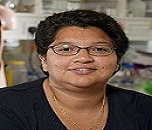
Biography:
Silvia Melgar received her PhD in Immunology from Umeå University in Sweden, followed by a Postdoctoral Fellowship and a Senior Research Scientist position at AstraZeneca R&D Mölndal, Sweden. She is currently an APC Faculty Investigator under the Host - Microbe Dialogue Research theme in the APC Microbiome Ireland Research Institute of University College Cork (UCC), Ireland. She joined the APC in 2008 as a Principal Scientist under the GlaxoSmithKline-APC collaboration and became an Investigator in 2012. Her research interests include 1) the identification of novel molecular mechanisms associated to diet - host - bacteria interactions and their relevance to health and intestinal disorders such as inflammatory bowel disease (IBD) and colorectal cancer; 2) identification and pre-clinical evaluation of novel therapies for inflammatory and malignant conditions in the gastrointestinal tract in animal models and in in vitro cell systems.
Abstract:
Westernized diet, defined by high contents of saturated fats and sucrose, is associated with the development of several diseases including metabolic syndrome, obesity and cancer. Intestinal inflammatory responses are mediated by a complex crosstalk between the environment, microbiota and the immune system. Alterations in any of these systems can lead to development of gastrointestinal conditions such as inflammatory bowel diseases (IBD). Triggering factors for IBD and colitis-associated cancer (CAC) include environmental factors (e.g. stress), gut microbiota composition and diet. Recent
reports indicate that a specific pathobiont outgrowth in IL-10-/- mice fed with a milk derived fat diet aggravated colitis. Epidemiological data have also identified processed meats and saturated fat as risk factors for IBD and colon cancer. Prebiotics are selectively fermentable ingredients that can change the composition and/or activity of the intestinal microbiota, which can lead to beneficial effects on the host. Short chain fatty acids (SCFAs) are the fermentation products of prebiotic digestion by the colonic commensal microbiota, with the most abundant SCFAs being butyrate, acetate and propionate. SCFAs, especially butyrate, act as source of energy for epithelial cells as well as being immune modulatory and helping dampening inflammation. In this talk, I’ll discuss our findings emanating from in vitro and in vivo studies investigating the effect of diets, bacteria and bacterial metabolites on intestinal epithelial cell responses and in experimental models of colitis and CAC. To date, we have data showing that high fat diets can positively and negatively affect the outcome of colitis and CAC by regulating the microbiota, microbial metabolites and host epithelial and immune responses. In addition, we have generated mechanistic insights on the role of individual SCFAs and IBD-associated pathobionts such as adherent and invasive Escherichia coli (AIEC) on intestinal epithelial cell responses.

Biography:
Jaya Maheshwari is a prominent dignified Surgeon and has pursued minimal access surgery moving further in her career. During her academic journey she has been awarded a couple of fellowships in laparoscopy from the top institutes. Ongoing with her pursuit for academic excellence she specialized and got certified in advance proctology and lasers. She is currently the Co-Convener for the FIAGES Board. She presently heads the Department of Advance Proctology and Department of Laparoscopic Surgery in Jyoti Hospital, Jaipur. Her rich clinical career in performing thousands of surgeries over a span of nearly one and half decade, and her vision for quality and excellence made her establish a first of its kind department, specifically in proctocare and minimal access surgeries. The department offers a plethora of surgeries and the most advance techniques, like the STARR for severe constipation, staplers and lasers for piles, fistula and fissures, and various types of mesh repairs for all hernias.
Abstract:
Pilonidal sinus is a chronic inflammatory condition which is caused due to involution of hair fragment into the gluteal or natal region. It is also called as inflammatory disease of gluteal region. It is twice as common in males between 15-25 years of age. Occasionally it occurs in different region like umbilicus, nose, groin, axilla, clitoris, interdigital tract, suprapubic area, penis or occiput. The present report highlights the condition in a 24-year old male with discharging sinus in the gluteal cleft and itching from the past one-month. Diagnosis of the diseases is straightforward clinically with discharging sinus and multiple pits in the natal cleft, and choice of particular surgical approach was laser pilonidoplasty. The procedure was performed under local anaesthesia with 1470 nm diode laser as beam source, with radial fibre, which would destroy the deep fistula system of the sinus. A 600 micron fibre with a special glass top (CORONA) fistula probe fibre with power settings at 10 watt and energy dosage at 100 joules per cm was used. The patient recovered completely and returned to work within 2 months. The procedure does not involve any painful dressings post operatively. In our experience, laser pilonidoplasty is the choice of procedure for the disease as there are less chances of morbidity and recurrence and better chances of early healing and cure of the disease. Hair removal is maintained until wounds are healed, after which laser hair removal is recommended of the local area. The lasers thus, prove to be an attractive treatment alternate for pilonidal sinus.
Raihan A S M A
Bangabandhu Sheikh Mujib Medical University, Bangladesh
Title: Association of nontuberculous mycobacteria (NTM) with Crohn's disease (CD)
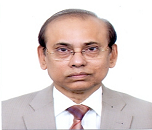
Biography:
Raihan A S M A is currently working in the Department of Gastroenterology, Bangabandhu Sheikh Mujib Medical University, Dhaka, Bangladesh. His research interest is focused in Irritable bowel syndrome, inflammatory bowel disease, peptic ulcer disease and Helicobacter pylori infection. His important works are: profile of ulcerative colitis in Bangladesh, presented in APDW (2006); profile of patients of Crohn's disease in Bangladesh; symptomatic overlap in patients with diarrhoea predominant irritable bowel syndrome and microscopic colitis in Bangladeshi population and histopathological alteration in post infectious irritable bowel syndrome. He has developed a clinical scoring system to differentiate difficult to diagnose cases of intestinal tuberculosis and Crohn's disease and presented his work at Asia Pacific Digestive Week, Kobe, Japan in 2016. He has more than 50 publications and has supervised more than 50 theses.
Abstract:
Introduction: The most widely held hypothesis on the pathogenesis of IBD (Inflammatory Bowel Disease) is that overly aggressive acquired (T cell) immune responses to a subset of commensal enteric bacteria develop in genetically susceptible hosts, & environmental factors precipitate the onset or reactivation of disease. But it is almost universally accepted that a host genetic predisposition is critical for development of CD. Among bacteria Mycobacterium avium subsp paratuberculosis (MAP) has shown high prevalence although not uniformly. This large variation may be due to differences in DNA extraction techniques or to geographical variations in the prevalence and modes of transmission of MAP.
Aim & Objectives: This prospective study aimed to see the association of NTM with Crohn’s disease.
Methods: Patients of CD were included in the study as case. Patients of IBS (Irritable Bowel Syndrome) or suspected colorectal malignancy who were found to be normal at colonoscopy and colonic biopsy was normal, were included in the study as control. Two bites of biopsy from the lesion in CD patients were taken for NTM by PCR. In control group two bites were taken for histopathology and two bites were taken for NTM PCR from left side of the colon. We used ITS primer for NTM and IS 900 primer for Mycobacterium avium sub species paratuberculososis (MAP) in PCR. We extracted the DNA from tissue for PCR using QIAamp DNA mini kit.
Results: We studied 34 CD patients and 34 controls. Out of 34 cases 28 were found to be positive for nontuberculous mycobacteria (NTM) and 6 were negative. Out of 34 controls only 8 were found to be positive for nontuberculous mycobacteria (NTM) and 26 were negative. Odds ratio 15.17 (95 % CI 4.07-60.75) and P value was significant (0.001). Among them we couldn’t detect MAP neither in cases nor in controls.
Conclusions: From this study it appears that NTM other than MAP may have association with Crohn's disease in Bangladesh.

Biography:
Biljana Vuletic is Associate Professor of Pediatrics at the Faculty of Medical Sciences University of Kragujevac and Chief of the Department of Gastroenterology of Pediatric clinic and a full ESPGHAN member. She received her medical degree from the Medical Faculty University of Belgrade. She started her residency in pediatrics at the University Children’s Hospital University of Belgrade. There she also trained in Pediatric endoscopy and ultrasonography. She was finished two hands-on Courses in UK, Sheffield Children’s Hospital She has been accepted by OMI foundation, Austria, for Observer ship program at the Medical University of Graz, Universities Kinderklinik LKH Graz two times. Her mainly clinical interests include chronic intestinal failure, coeliac disease and clinical nutrition. She has summary 168 publications including authored or co-authored papers in peer-reviewed journals and also chapters in the national Monographs and Textbooks
published in Serbia.
Abstract:
Gluten, the largest complex protein component of a cereal grain, contains high levels of gliadin and glutenin known as prolamines. Similarly, a high concentration of prolamines was found in barley and rye, so the term ‘gluten’ has become synonymous with the protein content in all three cereals. Researchers have identified gluten to be the main etiologic and causative agent of coeliac disease (CD) in genetically predisposed individuals and a strict gluten-free diet is an essential part of treatment. Not so long ago, the possible role of gluten as the causative agent of other illnesses and not just coeliac disease (CD) spurred the considerable attention of both the medical and general public. Another well-known condition that requires the elimination of wheat proteins is the wheat allergy (WA). At the same time, many people who do not suffer from either CD or WA, exhibit a variety of symptoms that disappear while on a gluten-free diet (GFD). The term non-coeliac gluten sensitivity (NCGS) was used to describe this status which, together with CD and WA, makes a spectrum of gluten-mediated disorders. What non-coeliac gluten sensitivity actually implies is the subject of discussion and the prevalence of such conditions is still unknown. In some patients, the symptoms decrease while adhering to GFD because they have eliminated gluten, while in others, their recovery results from the avoidance of non-protein cereal components, such as sugars belonging to FODMAPs. The confusion about the benefits of GFD resulted in its widespread adoption as the most popular dietary regimen in the USA today, followed by the multibillion-dollar gluten-free food industry (GF). Although the exclusion of gluten from the diet is essential in patients with confirmed CD and BA, the fact is that they make up only a small percentage of those following a GFD, mostly for personal but not medical reasons. Strict adherence to GFD is difficult and costly and involves the risk of nutritional deficiency and weight gain (81%) due to the hyper caloric content of commercial gluten-free foods. GF products are not enriched and may be deficient in fibers, thiamine, folate, vitamin A, magnesium, calcium, and iron. In addition, there is no evidence of a need to eliminate other sources of gluten (rye, barley) in case of non-coeliac gluten sensitivity.
Kenan Yusif Zade
Military Hospital of State Border Service, Azerbaijan
Title: The effectiveness of the new method of radial sphincterotomy

Biography:
Kenan Yusif Zade holds an MD and PhD Degree from Azerbaijan Medical University, Azerbaijan. He also holds an MBA Degree from Maastricht School of Management, The Netherlands and EMBA Degree from ADA University, Azerbaijan. He is the Head of Military Hospital of State Border Service, Azerbaijan. His professional fields are general surgery, gastroenterology and invasive endoscopy. In 2007, he founded an Association of Turkish-Azerbaijani Endoscopic Surgeons. He is also the President-Elect (2017-2019) of Ambroise Paré International Military Surgery Forum (APIMSF). His second education is Business Management.
Abstract:
Introduction: In choledocholithiasis subject to the size of the stone and the anatomical structure of the papilla the size of the cross-section in sphincterotomy may vary. Sufficiently large incision in sphincterotomy leads to the increase in the incidence of complications after ERCP as perforation, cholangitis, and pancreatitis.
Materials & Methodology: We performed 77 ERCP (endoscopic retrograde cholangio-pancreatography) operations in patients with a diagnosis of "choledocholithiasis". In the first group (59 patients) we performed standard sphincterotomy incision in 11, 12 or 13 o’clock direction, in the second group (18 patients) - "radial" sphincterotomy. The technique of "radial" sphincterotomy we developed allows to make several lateral incisions in 11, 12 and 13 o’clock directions. Thus, the main incision can be made up to transverse fold, and other radial incisions shall be made below the transverse folds, without going beyond the boundaries of the assumed course of intramural choledoch. Thus, the complete cross section of the incision with additional insections at the radial sphincterotomy becomes 1.5 times larger than the main incision in standard sphincterotomy.
Results: In the first group periampullary diverticulum was 16.7%, while in the second group - 47.4%. Number of stones in the first group – 2.25±0.49, in the second – 2.22±0.32, sizes of the stones – 10.07±4.93 and 19.01±3.31 mm, respectively. In the first group, complications occurred in 3 (5.08%) patients: in 1 of them - post-ERCP pancreatitis, in 2 - bleeding during the session. In the second group, only 1 (5.5%) patient had pancreatitis and other early and late complications. In the first group with 3 patients - the common bile duct stone removal was achieved in two sessions with a few day interval, the remaining - in a single session. In the 2nd group, all patients required only one session. No cases of mortality occurred in any of the groups.
Conclusions: Radial sphincterotomy technique was substantiated from anatomical and mathematical aspects. The proposed technique is a safe way to increase the area of dissected papillae ensuring efficient removal of large stones through such incision.
Ziad Aljarad
Aleppo University Hospital, Syria
Title: The relationship between Rh and ABO Blood Groups distribution and the incidence of gastric cancer and peptic ulcer disease: Case-control study
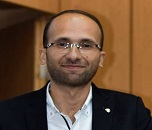
Biography:
Ziad Aljarad has a master degree in gastroenterology and Hepatology from Aleppo University. He is interested in clinical research. He has four published research papers and a published book. He is also interested in teaching principles of clinical research to medical students. He has participated in many research activities and conferences, and he is a member of Continuous Medical Learning and Research Center (CMERC) in Aleppo University. He is also interested in Humanitarian work. He was the coordinator of health care in the Syrian Arab Red Crescent- Aleppo Branch, and now he is the National Professional Officer for TB, HIV and Hepatitis in the World Health Organization (WHO)
Abstract:
Statement of the Problem: In 1953, Aird et al. found an association between blood group A and gastric cancer, and between blood group O and peptic ulcer disease (PUD). Further research demonstrated relationships between ABO blood groups and some diseases. No studies included Rh blood groups in the analysis. There is a controversy among studies investigating the association of ABO blood groups with gastric cancer and PUD. This study aims to investigate the relationship between Rh and ABO blood groups and the incidence of gastric cancer and PUD. To our knowledge, this is the first study that includes Rh blood groups in the investigation.
Methodology: We chose case-control design. Participants underwent esophagogastro - duodenoscopy (EGD) during 2016 and 2017 in Aleppo University hospital. We did ABO and Rh typing for all participants. Biopsies were done when indicated. We formed four case groups: benign PUD group (n=276), benign gastric ulcer group (n=125), benign duodenal ulcer group (n=169), gastric cancer group (n=26). The control group (n=276) consisted of participants whose EGDs were normal or revealed only gastritis or duodenitis. We used ODDs Ratio with 95% confidence interval and P-value to evaluate statistical significance of differences between groups.
Findings: There is no significant relationship between Rh blood groups and gastric cancer or PUD. There is no relationship between ABO blood groups and PUD. There is an increased risk of gastric cancer among blood group A. Non-A groups revealed no significant risk. 100% of biopsies showed H. pylori.
Conclusion: After comparing our findings to available literature, we suggest larger-scale studies to investigate the association of non-A groups with gastric cancer, and Rh groups with gastric cancer and PUD. We recommend studying the feasibility of establishing screening programs for gastric cancer in people with blood group A. We should determine the prevalence of H.pylori infection in Syria.


















